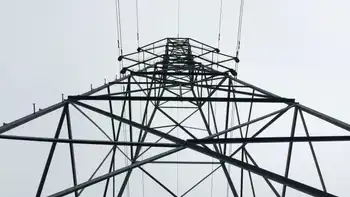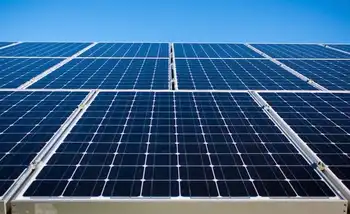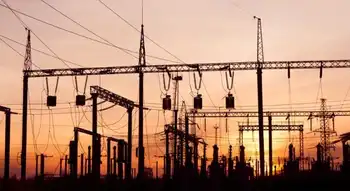Volvo takes on safety challenges in EVs
By Washington Times
Substation Relay Protection Training
Our customized live online or in‑person group training can be delivered to your staff at your location.

- Live Online
- 12 hours Instructor-led
- Group Training Available
The basic perspective is that a battery-powered Volvo must be as safe as any other new Volvo car - when it comes to owning and driving and also in the event of an accident.
"We apply the same high safety standards to all our products but the safety-related challenges may differ depending on the driveline and fuel being used. To us, electrification technology is another exciting challenge in our quest to build the safest cars on the market," said Volvo Cars safety specialist Thomas Broberg. He adds: "It is understandable that a lot of questions about electrification safety are related to what will happen in an accident. But considering that less than 1 percent of our cars are involved in an accident during their life on the roads, we must adopt a more holistic approach, including all the aspects of day-to-day usage of the car."
Volvo is conducting wide-ranging and thorough analysis of a variety of safety scenarios for cars with electric power. Through advanced automatic monitoring of battery status and by encapsulating the battery and protecting it effectively in a collision, the result is a comprehensive safety package of the highest class.
"A holistic approach and real-life traffic conditions are always the starting point for our safety work. Based on our massive database with input from actual road accidents, we know where the focus must lie in everyday traffic conditions. The solutions we have developed for our forthcoming electric cars therefore take into account the situations that are unique to this type of car," Thomas Broberg said.
Everything from the way the cars are produced, used and serviced to the way they are recycled is analyzed thoroughly and the information obtained is used to shape the development of the final production car.
Volvo's safety tests take place in several stages - first at component level, then for whole systems and finally a complete safety test virtually in the computer and physically in Volvo's technically advanced crash-test center.
"At present we are conducting tests at component level to see how the battery is affected by harsh braking and the subsequent collision. We are examining the results from several different angles. We have also carried out, for the first time, advanced full-scale crash tests to evaluate the technology used in electrically powered cars," Thomas Broberg said.
Volvo is using its unique know-how from actual traffic conditions to carry out detailed testing and verification. What is more, the test regime includes the general requirements and protocols of the industry's safety institutes.
When Volvo analyses traffic situations from a safety perspective, the engineers use a model that illustrates the sequence of events during the whole driving phase. The process is divided into five phases: from the normal driving situation to after the accident has occurred. Based on these five phases, Volvo develops new safety solutions and improves existing ones.
All Volvo's existing safety systems will also be available in the company's electric cars. However, electric power also adds new safety scenarios to the overall picture.
Volvo's safety specialists have meticulously analyzed the five accident sequence phases and developed unique solutions for the battery and for protection of the occupants as necessary.
• Normal driving: A comprehensive and advanced monitoring system keeps watch and ensures that each cell maintains the correct voltage level and optimum operating temperature by regulating the cooling system. This is significant to both safety and battery capacity. In the event of any deviation, the battery is automatically shut down as a preventive measure.
• Conflict: The battery adds weight that can create new conditions for the vehicle's dynamics and alter the car's behavior, for instance in fast avoidance maneuvers. Volvo's existing platforms and braking systems can handle the increased mass, and dynamic stability and traction control helps the driver contain the situation.
• Avoidance: If a collision is imminent and the driver finds it difficult to handle the situation, the vehicle can activate automatic systems such as collision warning with full auto brake and city safety to avoid or reduce the effects of an impact. These systems also can be available in cars with electric power.
• Collision: In order to reduce the effects of a collision, the battery is well protected and separated from the car's crumple zones. The battery is also sturdily encapsulated. Steel beams and other parts of the structure around the battery are reinforced to help protect it from being affected in a collision.
If the battery is damaged, resulting in gas leakage, there are special evacuation ducts that lead the gas out under the car. In the event of extreme heat, the occupants are shielded by the battery's encapsulation.
At the moment of impact, crash sensors linked to the battery send information about the collision to the car's computer, which automatically shuts off the power supply to prevent the risk of a short-circuit.
• After the collision: In addition, the battery has a security system that functions like a household circuit breaker. It shuts down and isolates the battery if the current travels in the wrong direction, for instance if two cables are pressed together as a result of an accident.
Volvo also works with the emergency rescue services, providing detailed instructions on how best to handle various Volvo models in the event of an accident.
The cars are equipped with a service cut-out to quickly and safely disconnect the vehicle's power supply.
Volvo Cars and the battery manufacturers have far-reaching product responsibility in regard to production and recycling. This ensures proper handling of the battery when it comes to the end of its life in the car.
"We may well see further down the line that cars powered solely by electricity can be made even safer than cars with combustion engines. We regard electrification technology as an exciting challenge - even from the safety viewpoint," Mr. Broberg said.











